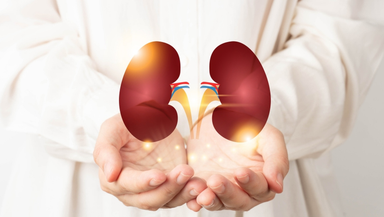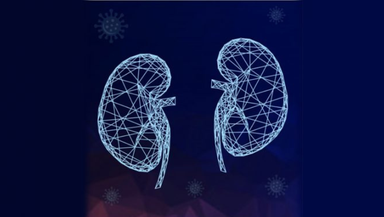Understanding the Symptoms of Interstitial Lung Disease: What You Need to Know

Interstitial lung disease (ILD) refers to a group of lung disorders characterized by inflammation and scarring of the interstitium, the tissue that supports the air sacs in the lungs. While ILD encompasses a wide range of conditions, they share common symptoms and challenges. In this guide, we'll explore the basics of ILD, its symptoms, diagnosis, and treatment options, empowering you with essential knowledge for managing this complex condition.
What is Interstitial Lung Disease?
Interstitial lung disease (ILD) is a broad term that encompasses over 200 different types of lung disorders. These conditions share the common feature of inflammation and scarring (fibrosis) of the interstitium, the tissue that surrounds and supports the air sacs (alveoli) in the lungs. This scarring can lead to stiffness in the lungs, making it difficult for them to expand and contract properly, thus impairing breathing.
What causes Interstitial Lung Disease?
The causes of ILD can vary depending on the specific type of lung disease. Some ILDs are caused by exposure to environmental factors such as asbestos, silica, or certain medications. Others may be related to autoimmune conditions like rheumatoid arthritis or systemic sclerosis. In many cases, however, the exact cause of ILD remains unknown, and these cases are referred to as idiopathic interstitial pneumonias.
"Recognizing the symptoms of interstitial lung diseases is crucial for timely diagnosis and intervention. If you experience persistent cough, shortness of breath, or unexplained fatigue, it's important to consult a pulmonologist for evaluation and personalized management." - Dr Shubham Sharma, Pulmonologist at Gleneagles Hospital, Kengeri
What are the symptoms of Interstitial Lung Disease?
The symptoms of interstitial lung diseases (ILDs) can vary widely depending on the specific type of ILD and the stage of the disease. While some individuals may experience mild symptoms that gradually worsen over time, others may have more severe symptoms that significantly impact their daily lives. Here's a closer look at the common symptoms associated with ILDs:
- Persistent dry cough: A persistent, dry cough is one of the hallmark symptoms of ILDs. This cough may be mild at first but can become more frequent and severe as the disease progresses. The cough is often unproductive, meaning that little to no mucus is produced.
- Shortness of breath: Shortness of breath, also known as dyspnea, is another common symptom of ILDs. Individuals may experience difficulty breathing, especially with exertion or physical activity. As the disease advances, shortness of breath may occur even during rest.
- Fatigue: Chronic fatigue is a prevalent symptom among individuals with ILDs. The persistent inflammation and scarring in the lungs can cause fatigue and weakness, making it challenging to engage in everyday activities.
- Chest discomfort or tightness: Some individuals with ILDs may experience chest discomfort or tightness. This sensation can range from mild discomfort to severe pressure or pain in the chest area.
- Unexplained weight loss: Unexplained weight loss may occur in some individuals with ILDs, particularly as the disease progresses. This weight loss may be due to a combination of factors, including decreased appetite, difficulty breathing, and increased energy expenditure by the body to cope with the disease.
- Clubbing of the fingers or toes: Clubbing is a physical manifestation often associated with advanced ILDs. It refers to the enlargement and rounding of the fingertips and toes, along with the nails becoming curved and shiny. Clubbing is believed to result from chronic low oxygen levels in the blood.
Cyanosis: Cyanosis is a bluish discoloration of the skin or lips that occurs when there is insufficient oxygen in the bloodstream. In individuals with ILDs, cyanosis may develop as the disease progresses and lung function declines, leading to inadequate oxygenation of the blood.
It's important to note that the symptoms of ILDs can overlap with those of other respiratory conditions, making diagnosis challenging. If you experience any of these symptoms, especially if they persist or worsen over time, it's essential to seek medical attention for proper evaluation and diagnosis. Early detection and intervention can help slow the progression of the disease and improve quality of life.
How are Interstitial Lung Disease diagnosed?
Diagnosing ILD often involves a combination of medical history evaluation, physical examination, imaging tests (such as chest X-rays or CT scans), pulmonary function tests, and sometimes lung biopsy. Since ILD encompasses many different conditions, an accurate diagnosis is essential for determining the appropriate treatment approach.
How are interstitial lung diseases treated?
Treatment for ILD depends on the underlying cause and the severity of the condition. In some cases, addressing the underlying cause, such as exposure to environmental toxins, may help slow the progression of the disease. Medications, including corticosteroids and immunosuppressants, may be prescribed to reduce inflammation and manage symptoms. Oxygen therapy may be recommended for individuals with severe breathing difficulties, and in some cases, lung transplantation may be considered for those with end-stage disease.
Key points about Interstitial Lung Disease
- ILD refers to a group of lung disorders characterized by inflammation and scarring of the interstitium.
- Common symptoms include persistent dry cough, shortness of breath, fatigue, and chest discomfort.
- Diagnosis often involves a combination of medical history evaluation, imaging tests, pulmonary function tests, and sometimes lung biopsy.
- Treatment depends on the underlying cause and may include medications, oxygen therapy, and lung transplantation.
Understanding the symptoms and challenges of ILD is essential for individuals living with this condition and their caregivers. By educating yourself about ILD and working closely with healthcare professionals, you can better manage the symptoms and improve your quality of life.
Specialities
Clear allMeet the doctor

Dr Balasubramaniam Govini
Heart and Lung Transplant
MBBS, MS (Gen Surgery), MCh (Cardiothoracic Surgery)











